The Digital Marketing space is always changing, and what was working for you once might be working against you now. Even the most sophisticated marketers can make some Google ads mistakes.
Google Advertising (and performance marketing in general), is about to break down as most companies are indeed using the wrong metrics.
A new approach that can drive better decision-making is needed and those companies that will embrace it will have an edge over the competition and move faster in the market.
The current ways of doing Google Advertising need to be adjusted again, and in this post, we’ll show you the most common Google ads mistakes and how to fix them.
Do you want to discover the fundamental elements of Google Advertising? Do you want to learn what changes you can implement to open up new opportunities and grow your business?
You’re in the right place then!
The Cardinal Sins Of Google Advertising
Google Ads have been widely used by performance marketers for many years now.
However, the advertising landscape is constantly evolving and we can no longer rely on strategies that worked in the past.

Click HERE or on the image to register
Gianluca Binelli, the founder and Managing Director of Booster Box, a performance agency specialized in scientific marketing, will show you the path to avoid and neutralize the cardinal sins of Google advertising to skyrocket leads and revenue.
Seats are limited, so register now! And if you can’t make it (or want to watch it again) we’ll send you the recording of the event.
The 6 Google Ads Mistakes You’re Probably Making (and what to do instead)
Whether it’s deciding whether to invest on a new platform or not, or what’s the best way to track traffic and conversions, how individual platforms’ algorithms work, the new management of third-party cookies, or how to deal with more and more machine learning being incorporated, there is always something to stay on top of if you want to get results with your digital advertising.
Google Ads Mistake #1: Rely on ROAS
Today marketers have access to an ever-increasing amount of data. However, when it comes to measuring the success of digital marketing campaigns, most advertisers focus on simple metrics, without considering the big picture.
In particular, most e-commerce advertisers are still optimizing their media spend and creating strategies based on ROAS (Return On Advertising Spend). While this is common practice, normally accepted by most advertisers, this type of approach has huge limitations.
ROAS should no longer be the only metric to be taken into consideration.
In fact, ROAS simply means optimizing for the best revenue that you are getting for your media spend which doesn’t necessarily mean that you will be getting the best profit for your media spend.
It’s important to focus on different metrics that are more business-oriented (e.g. LTV, Future Margin on Ad Spend).
There are two reasons ROAS doesn’t work:
- If we optimize for ROAS, we are considering revenue but not margin (and for e-commerce, margin is much more important than revenue). If we draw a comparison with the financial world, it’s like placing our bet on a stock by just looking at the revenue and not at the profit, not at the EBITDA. When it comes to eCommerce, margins tell a much more complex story as it really impacts the bottom line of what we are doing.
- ROAS does not take into consideration future transactions, nor the Lifetime Value of existing customers. ROAS, therefore, only gives us a partial view. Instead, we should consider the “Future Margin on Ad Spend”: that is, we take into account future transactions and the expected margin deriving from future customers in a given period of time.
Moving from ROAS to Future Margin on Ad Spend will give us a more complete view and will allow us to evaluate each bid, placement, etc. much more accurately.
Of course, when it comes to daily operations this is a radical change, requiring some technical implementations. However, this change will give us a much clearer view.
Imagine you are together with your competitors in front of a staircase and there is fog. Everyone can only see for the next 5 steps ahead. If we move to these metrics we can now see the next 50 steps.
So even if there are a lot of assumptions on how many future transactions we will get and what the margin will be for future transactions, this new perspective gives us a much clearer view than the competition- which means that we can evaluate every single placement, every single bid, every single creative, etc in a much more accurate way.
What to do instead: move from ROAS to Future Margin on Ad Spend
Google Ads Mistake #2: Luddism
Remember these words: Google is becoming a machine-learning driven black box, you have to embrace technology.
The world is becoming more and more of a black box driven by machine learning where Budgeting, Smart Bidding, Responsive Ads, Smart Shopping, and Keyword Selection are always less and less under our direct control.
For example, if our performance is great this week but we do not know why (ie: there is an algorithm in our Facebook campaign that has decided that we will get more exposure and that some lookalike activities that we are doing are going to work better) we won’t know why things are going up or down and we won’t have any control.
If we look at what has happened in the last few years we can see that we went from human-driven activities to machine learning activities.
- Budgeting: In the past, this used to be 100% manual. Now budgeting is automatic (think about the introduction of CBO on Facebook).
- Bidding is the same, in the past most of the bidding was manual and there were only a few automated solutions (e.g. target CPA, DCO); right now Google is pushing more and more on smart bidding.
- Ad copy testing: in the past, we would run a lot of A/B testing on different ad copies, right now with responsive ads we are just feeding the “beast” with 10 different headlines, and then Google and Facebook run their magic.
- Shopping Optimization: probably there is still a human element in place for keyword selection (the machine there is doing less and less) but keywords are becoming a little less relevant than they used to be and there are machine solutions that will most likely do a better job than a human can do soon.
Machine learning is coming and we cannot really do anything about that. We need to make sure that whenever we are managing the budget for our own activities, or if we are on the agency side and are managing investment for our clients, we are aware that this is the world where we are living.
We have to embrace these changes and use the trends that we are seeing in order to leverage and outsmart the competition.
This is a great opportunity as nowadays most advertisers out there are either fully in love with machine learning and fall for everything that is AI-related or they refuse to accept the fact that machine learning is taking over. The reality, however, is in-between.
What to do instead: embrace the fact that the world is a machine-learning driven black-box
Google Ads Mistake #3: Rely on Google’s Algorithms only
You might recall Syndrome, one of the villains in the movie The Incredibles. Syndrome’s plan to take down superheroes is to give everyone superpowers. His idea is that if everyone is “super” no one will be.
This is exactly what Google, Amazon, and Facebook are doing.
If we think about it we are all using the same algorithms. The algorithms are leveling down the competition. Advertiser A is using algorithm A, advertiser B is using algorithm B but actually, each advertiser can switch to the other guy’s algorithm with a click.
Where is our competitive advantage?
It’s no longer the bidding model we are using, or what ad engine testing we are using, nor is it the algorithm itself as this is becoming a commodity.
The secret sauce is the data we are using to feed the algorithms. This is a fantastic opportunity as most of the world is blindly in love with the idea of “let me use a smarter algorithm”, “let me test something that will bring more performance” but that’s not really the point.
In 2 years’ time algorithms are going to be a pure commodity and we’ll all recognize that it is just a formula with a fancy name where the math behind it is empowered with the data we are feeding it.
What to do instead: Inject first-party data into the account by integrating Google Analytics, Google Ads, and your CRM.
Google Ads Mistake #4: Forget About Audiences
Customers are people, not keywords.
As advertisers we tend to think in terms of keywords: what keywords are people searching for, what keywords can I target, what is the right matching option, etc. We often forget that we need to think in terms of people rather than keywords (ie: people are looking for us, not keywords).
Digital advertising platforms, Google, in particular, are moving more and more towards audiences, meaning that audiences are playing an increasingly important role. This is pushing us to think more about our users and customers rather than keywords.
Audiences are becoming more and more important and this is something that is giving us an unprecedented amount of opportunities because we can now add an extra layer to empower even more of our campaigns when it comes to Google and Facebook.
Audiences, of course, are not a replacement for keywords, but a refinement: they allow us to refine optimization and expand campaign performance.
Thanks to audience segments, bid management, the definition of creatives, and the choice of targeting can be improved.
What to do instead: create groups with similar characteristics using the data available through a clustering-based approach. Segment the customer base using the RFM (Recency, Frequency, Monetary Value) approach.
Google Ads Mistake #5: Blindly Trust Data
We cannot solely rely on the data we receive from Facebook and the data we receive from Google.
Why? Because Platforms Silos claim the same revenue.
We are often in a position where Facebook is claiming that for a certain campaign we delivered $10 and Google is claiming we delivered $20 but then you go and check with your Finance department and you find out you don’t have $30 but you only have $25.
The reality is that platforms are operating in silos. They don’t talk to each other and it’s very very difficult for us as an advertiser to have one unified view that doesn’t have a platform that has some sort of skin in the game – one that is agnostic enough and will allow us to make the best decision for allocating our investments.
Right now, it’s not only about if we can trust Facebook or Google 100%, the question is more complex.
Truth is, we don’t have, as of now, a complete way to monitor the user journey across different platforms and different devices and we don’t have one single source of truth because we’re relying mostly on the data we’re getting directly and only from the ad platforms.
In all these discrepancies, lies this massive opportunity for optimization. Bridging the gap between different platforms in one aggregated, agnostic view is a fantastic driver for optimization.
What to do instead: consider the various platforms in a unified manner in order to have an attribution model that is able to give the right weight to each platform when considering the customer’s purchase process.
Google Ads Mistake #6: Rely on Third-Party Data
Be prepared marketers, a meteor is coming our way: cookie restrictions
Google recently announced that they are going to block 3rd party cookies, something which might have major implications for other players in the advertising industry like Criteo and Programmatic platforms.
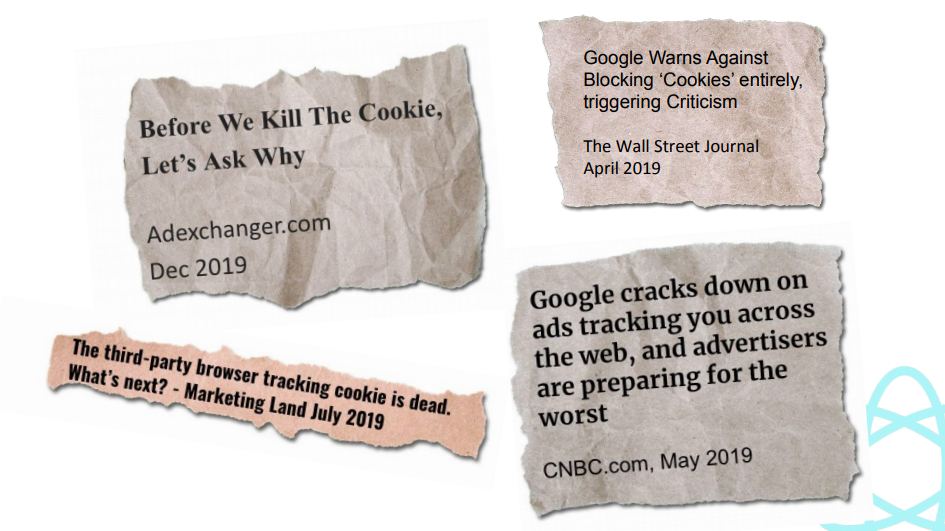
Sources: Adexchanger, Marketingland, The Wall Street Journal, CNBC
Cookie restrictions will change the game for us, and that’s something that we need to take into consideration because we need to move more towards first-party data – we cannot rely on cookies and tracking systems as we know them today. We know our customers better than Facebook does.
Leveraging the power of first-party data will help differentiate us from the competition as all advertisers are going to run campaigns, more or less, using the same algorithms (to decide targeting, bidding, budgeting, etc).
What to do instead: start collecting all first-party data and find an effective way to inject it into the advertising platforms
How To Solve the Top 6 Google Ads Mistakes
These are the six major problems Google advertising is facing nowadays. So what are the solutions?
Let’s start with these 3 steps:
- Align the organization and step beyond ROAS and optimize for future contribution margin.
- Connect Audience Data to Platforms: embrace machine learning and outsmart the competition by feeding algorithms with first-party data.
- Connect Business Results to Platforms. Build a channel-agnostic source of truth.
How can we actually do this?
In an uber simplified view, any online business is divided into 3 elements:
- We have a bunch of acquisition channels (E.g. Google, organic, search, Facebook, etc) that are pushing traffic to our website.
- People will perform an action that will bring us money.
- Money appears in the bank.
Basically what we’re saying is that in order to become a smarter online business we need to take our first party data (traffic on our website and money in the bank) and push this data back in the acquisition channels.
Here is a 7 steps checklist that can help you:
- Get the basics right: UTMs, GTM
- Pick a database: BigQuery would do
- Connect CRM data into your database
- Connect Ad Platforms data into your database
- Define your attribution model
- Define your clustering
- Push back your audience and LTV data into the Advertising Platforms (eg API Connectors)
Et Voilà! Performance marketing is fixed. But wait, there’s one extra step to take if you really want to succeed!
Learn What’s Working Now With Google Ads
It’s time to ditch some outdated strategies and get up to date with what’s working now with Google Ads. And what’s best than learn from the bests?
Click the image below and book your seat to the exclusive Masterclass with the author of this article.
In this free one-hour training session, Gianluca Binelli will cover six key topics that will improve the number of leads and the amount of revenue you get from your Google advertising.
Seats are limited, so register today!
Gianluca Binelli, founder of Booster Box (a performance agency specialized in scientific marketing) was voted 2nd Most Influential PPC Experts by PPC Hero. He was the Product Specialist and online marketing manager for Google’s products in EMEA and served as Capital G’s Advisor, helping startups with their online marketing in Google late stage investment fund. He is a regular speaker at international PPC conferences and teaches digital marketing at the University of Pisa (Italy). Get in touch with Gianluca on Linkedin, Twitter, or visit Booster Box website.
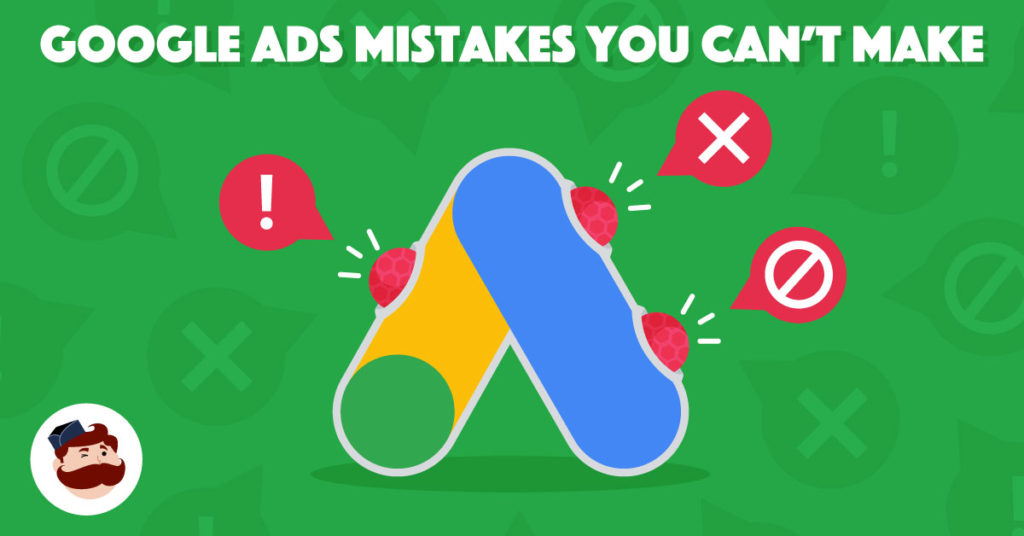
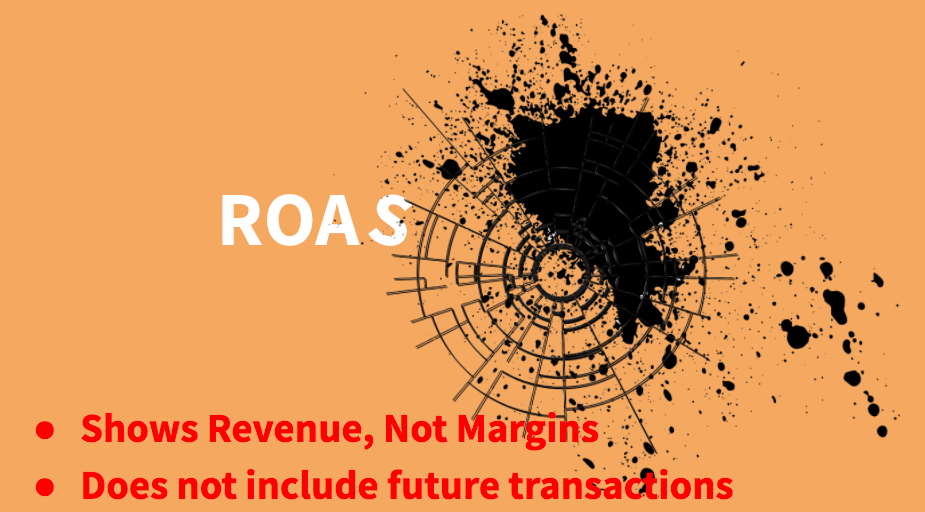


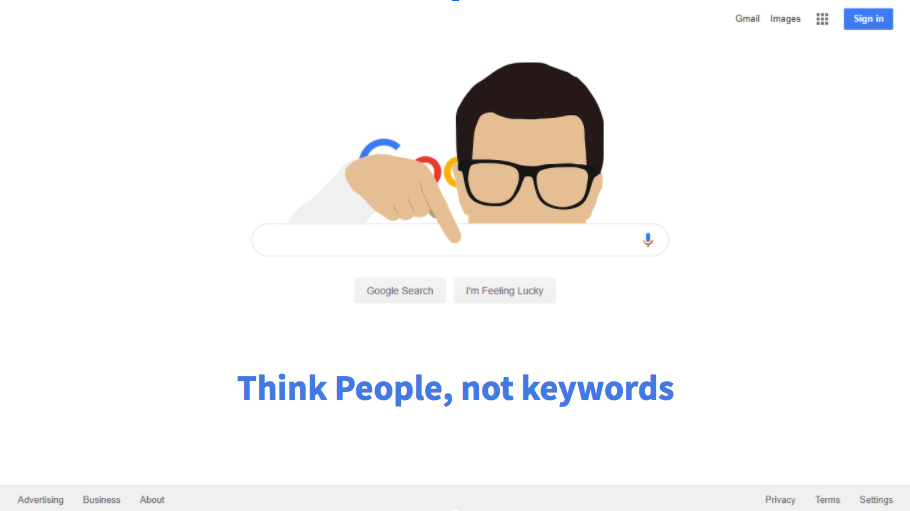


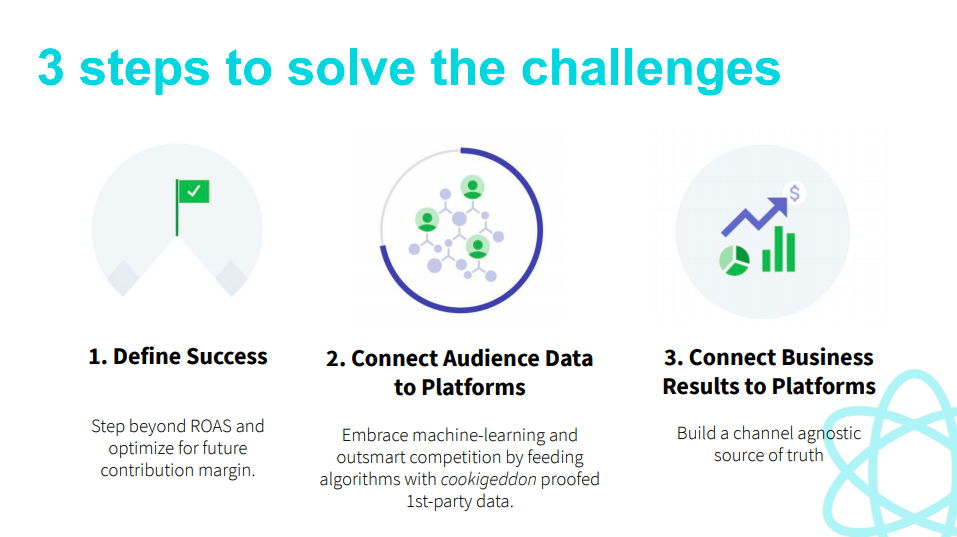
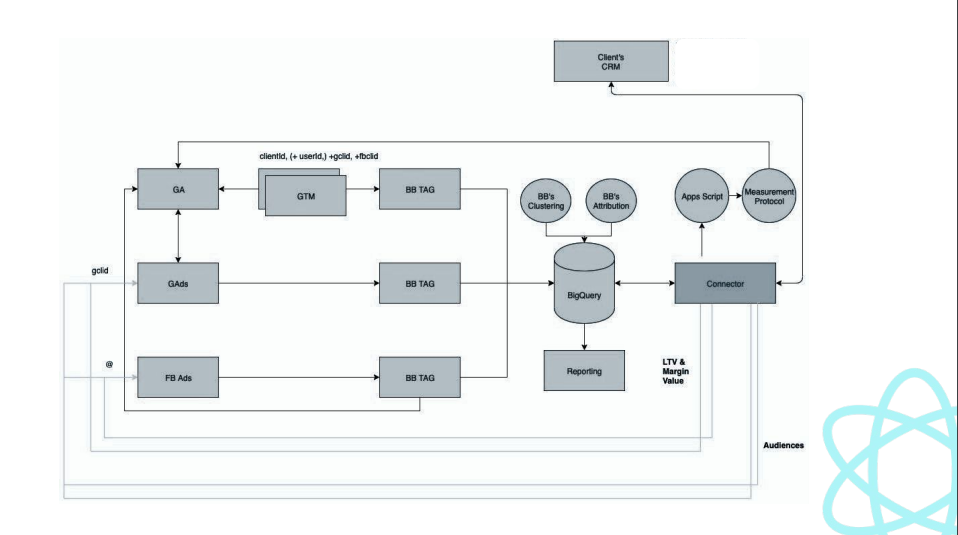
 Gianluca Binelli, founder of
Gianluca Binelli, founder of
Great content. It is always crucial to look beyond ROAS when it comes to determining the profitability of the campaign. Because loyal customers are always going to return back. Hence it makes more sense to look into the Lifetime value rather than just relying on ROAS. And I think you are very much correct when it comes to data discrepancy between various platforms. We cannot just trust them. Forget about Facebook and Google, data difference can be seen even between Google’s own other platforms as well. Once upon a time, I remember that there was a huge difference in the number of clicks and conversions reported by Google Ads and Google analytics for one of my campaigns. When I contacted AdWords support they just told me that they forward my query to the concerned team and then nothing actually happened.